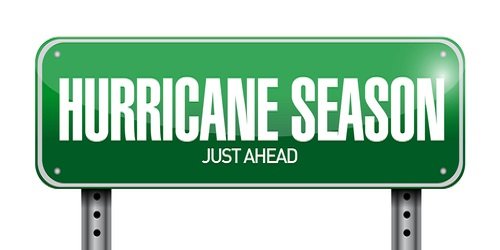 Florida
Florida - Hurricane researchers at Colorado State University (CSU) are predicting a slightly below-average Atlantic hurricane season in 2017, citing the potential development of El Niño and recent abnormal cooling in the Atlantic as primary factors.
According to the CSU researchers, a weak La Niña this past winter has dissipated, and there is the potential that a weak to moderate El Niño could develop by the peak of the Atlantic hurricane season. In addition, most of the North Atlantic has anomalously cooled over the past month, and the tropical Atlantic is now slightly cooler than normal. The cooler temperatures make it less likely for tropical cyclones to form and they are associated with a more stable atmosphere.
The CSU Tropical Meteorology Project team is predicting 11 named storms during the Atlantic hurricane season, which runs from June 1 to November 30. Of those, 4 are expected to become hurricanes and 2 to reach major hurricane strength.
The team predicts that 2017 hurricane activity will be about 85% of the average season. By comparison, 2016's hurricane activity was 135% of the average season.
The report also includes the probability of major hurricanes making landfall:
- 42% for the entire U.S. Coastline (average for the last century 52%)
- 24% for the U.S. East Coast, including the Florida peninsula (average for the last century 31%)
- 24% for the Gulf Coast from the Florida panhandle westward to Brownsville (average for the last century 30%)
- 34% for the Caribbean (average for the last century 42%)
The Extended Range Atlantic Basin Hurricane Forecast for 2017:
- Named Storms - 11
- Named Storm Days - 50
- Hurricanes - 4
- Hurricane Days - 16
- Major Hurricanes - 2
- Major Hurricane Days - 4
- Accumulated Cyclone Activity - 75
- Net Tropical Cyclone Activity - 85
Find more information about the CSU Tropical Meteorology Project
here.
Copyright Southern Stone Communications 2017.
 Florida - Hurricane researchers at Colorado State University (CSU) are predicting a slightly below-average Atlantic hurricane season in 2017, citing the potential development of El Niño and recent abnormal cooling in the Atlantic as primary factors.
According to the CSU researchers, a weak La Niña this past winter has dissipated, and there is the potential that a weak to moderate El Niño could develop by the peak of the Atlantic hurricane season. In addition, most of the North Atlantic has anomalously cooled over the past month, and the tropical Atlantic is now slightly cooler than normal. The cooler temperatures make it less likely for tropical cyclones to form and they are associated with a more stable atmosphere.
The CSU Tropical Meteorology Project team is predicting 11 named storms during the Atlantic hurricane season, which runs from June 1 to November 30. Of those, 4 are expected to become hurricanes and 2 to reach major hurricane strength.
The team predicts that 2017 hurricane activity will be about 85% of the average season. By comparison, 2016's hurricane activity was 135% of the average season.
The report also includes the probability of major hurricanes making landfall:
Florida - Hurricane researchers at Colorado State University (CSU) are predicting a slightly below-average Atlantic hurricane season in 2017, citing the potential development of El Niño and recent abnormal cooling in the Atlantic as primary factors.
According to the CSU researchers, a weak La Niña this past winter has dissipated, and there is the potential that a weak to moderate El Niño could develop by the peak of the Atlantic hurricane season. In addition, most of the North Atlantic has anomalously cooled over the past month, and the tropical Atlantic is now slightly cooler than normal. The cooler temperatures make it less likely for tropical cyclones to form and they are associated with a more stable atmosphere.
The CSU Tropical Meteorology Project team is predicting 11 named storms during the Atlantic hurricane season, which runs from June 1 to November 30. Of those, 4 are expected to become hurricanes and 2 to reach major hurricane strength.
The team predicts that 2017 hurricane activity will be about 85% of the average season. By comparison, 2016's hurricane activity was 135% of the average season.
The report also includes the probability of major hurricanes making landfall: